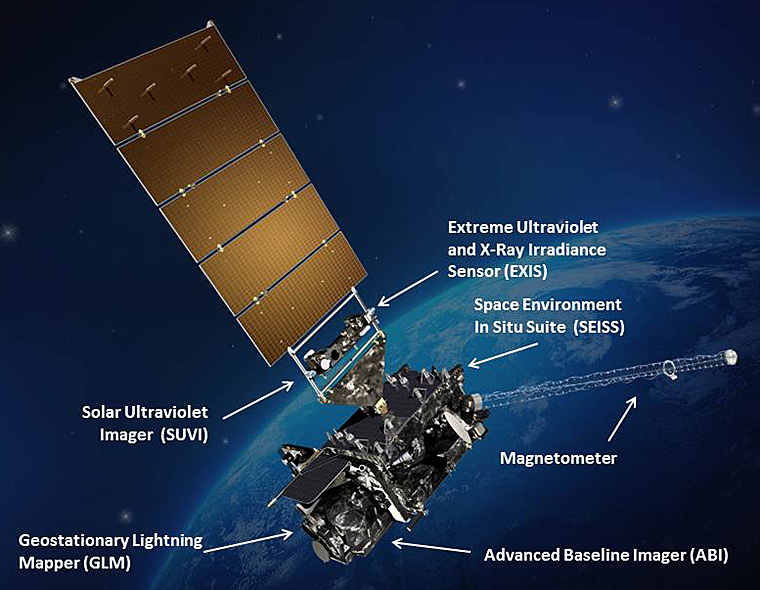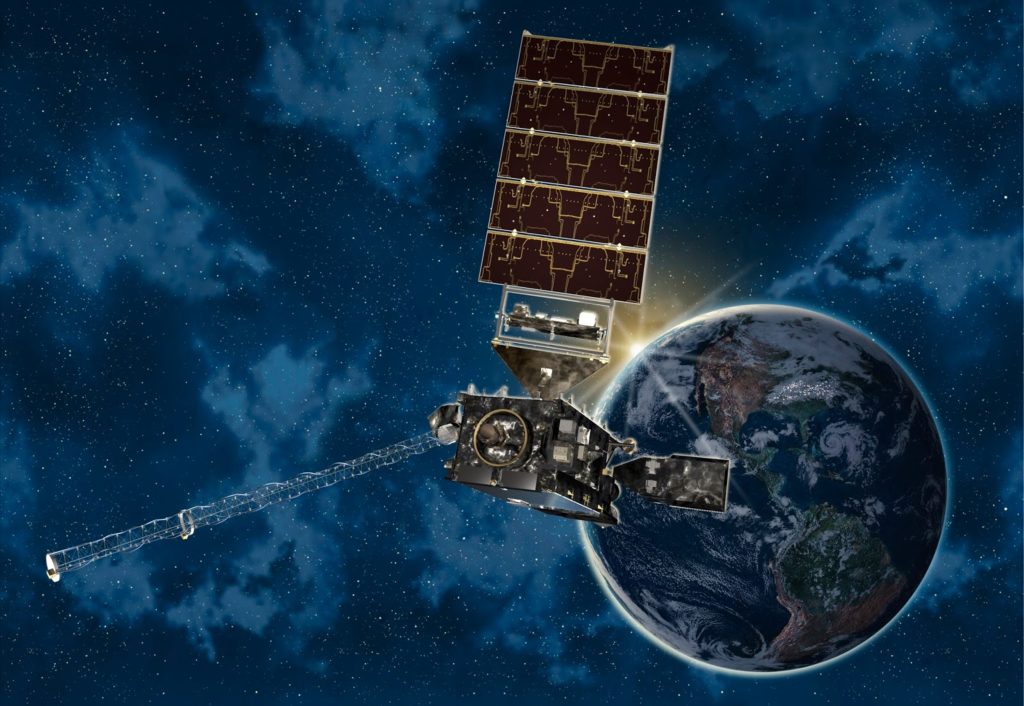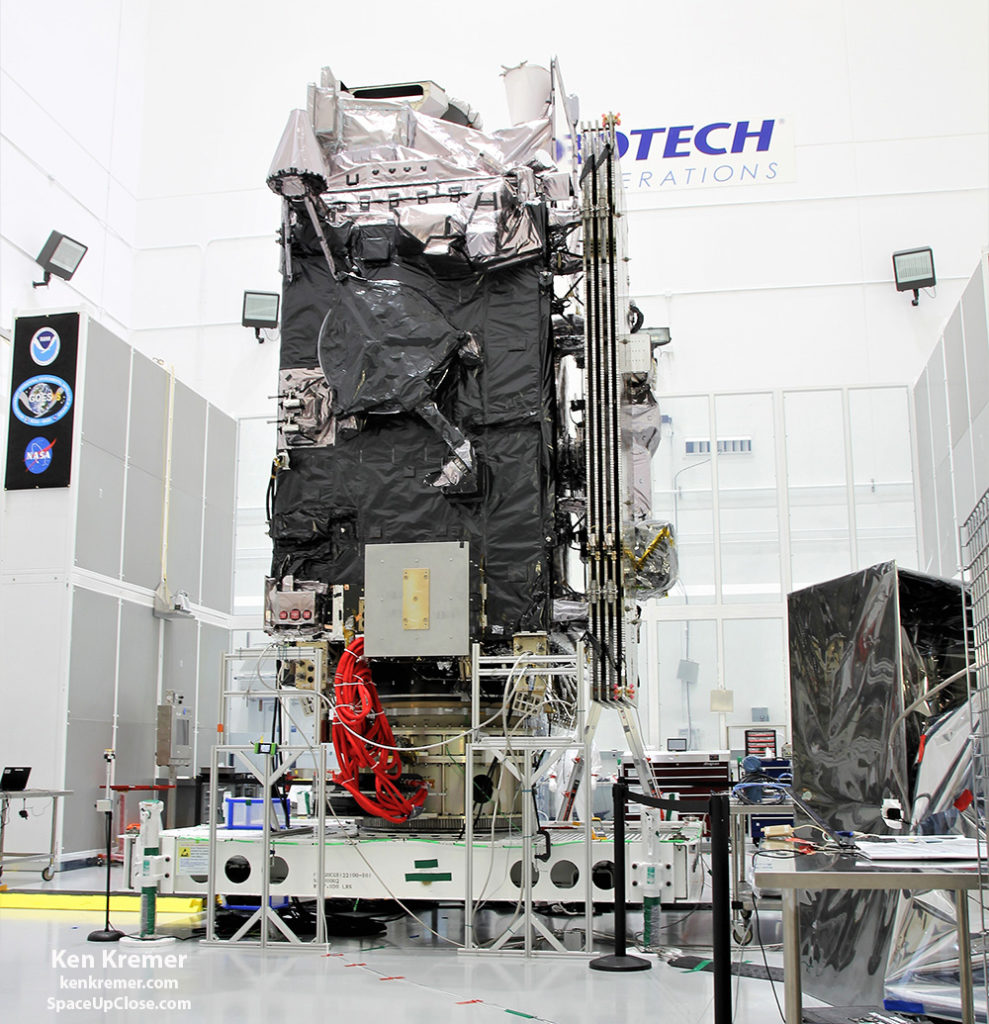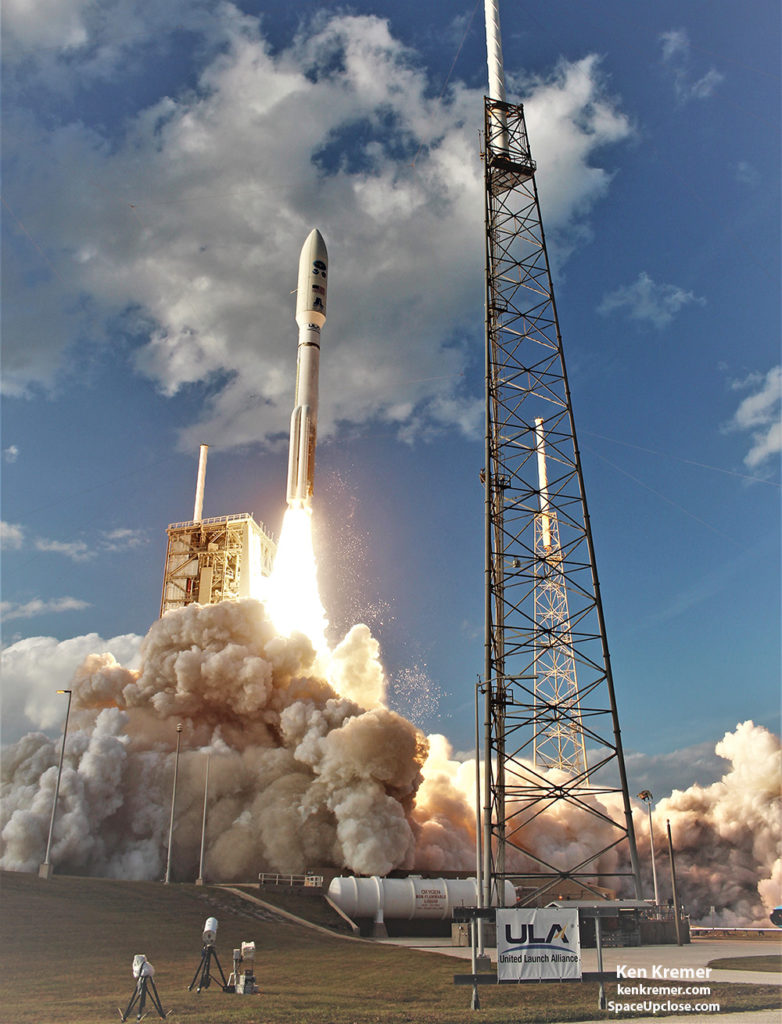CENTER, FL – The
key weather observing instrument on board the nations newest advanced weather
observatory, GOES-17, has suffered a serious anomaly with the cooling system essential
for enabling measurements with most of the spectral bands, say NOAA managers.
GOES-17 failed to start up properly during the normal on-orbit check out and commissioning
phase, said top managers of The
National Oceanic and Atmospheric Administration, or NOAA, at a May 23 media
briefing. NOAA runs the nations fleet of
weather observing satellites.
instrument on GOES-17 making 95% of the measurements.
 |
|
GOES-S weather observation satellite
instrument suite graphic. Credit: NASA/NOAA |
needed to cool ABI to approximately 60 Kelvin (or minus
351 degrees Fahrenheit)
the second satellite in a new constellation of weather observatories – known as
the GOES-R program – that are intended to provide a revolutionary upgrade to
the nations weather satellite fleet and weather forecasting abilities.
geostationary orbit barely
three months ago.
GOES-R Program is currently addressing a performance issue with the cooling
system encountered during commissioning of the GOES-17 Advanced
Baseline Imager (ABI) instrument,” said NOAA.
cooling system is an integral part of the ABI and did not start up properly
during the on-orbit checkout.”
Satellite-S (GOES-S) lifted off on a United Launch Alliance (ULA) Atlas V
rocket from seaside Space Launch Complex 41 at Cape Canaveral Air Force Station
in Florida on March 1,
2018.
six-month checkout of its suite of six state-of-the-art
science observing instruments and spacecraft systems
commenced on March 26 along with maneuvering
the satellite to its checkout position at 89.5
degrees West longitude.
failure with the cooling system impacts observations from 13 of the 16 spectral
bands in the infrared and near infrared wavelengths. Only the 3 visible band
channels appear to be unaffected at this time.
 |
|
GOES-S artists concept. Credit:
NOAA/NASA |
“The issue affects 13 of the infrared and
near-infrared channels on the instrument,” said NOAA.
three channels with the shortest wavelengths, which includes the visible
channels, are significantly affected.”
Service in a media call with reporters.
on the GOES platform, and 16 channels, of which 13 are infrared or
near-infrared, are important elements of our observing requirements, and if
they are not functioning fully, it is a loss. It is a performance issue we have
to address.”
launched in 2016 is functioning normally.
GOES-16 is the first in the four
satellite series of advanced GOES observatories.
2020
and prime contractor Lockheed Martin has been formed to investigate the anomaly
pursue multiple courses
of possible corrective actions.
ULA, Boeing, Lockheed Martin, Orbital ATK and more space and mission
reports direct from the Kennedy Space Center, Cape Canaveral Air Force Station,
Florida and Wallops Flight Facility, Virginia.
Earth and Planetary science and human spaceflight news: www.kenkremer.com –www.spaceupclose.com –
twitter @ken_kremer – email: ken at kenkremer.com



